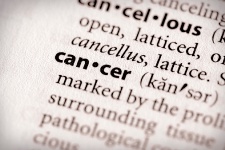 This week is Men’s Health Week so let’s take a look at some serious conditions that affect men’s health.
This week is Men’s Health Week so let’s take a look at some serious conditions that affect men’s health.
Testicular cancer is a disorder I chose to write about because, in my opinion, this potentially serious condition is not gaining enough awareness among men. Although prostate cancer has received a great deal of media attention and government support as a health promotion issue, testicular cancer has lagged behind.
Testicular cancer occurs in younger men but no age is immune to this type of cancer. The risk of developing this disease increases if you have a first-degree relative who has or had testicular cancer, if you are Caucasian, have a history of an undescended testicle, or if you eat a diet high in nitrates.
The best way to evaluate your current risk is to regularly self-examine your testicles. Self-examination is especially important if you have a positive family history of the disease. This can be accomplished the next time you have a shower or a bath by placing each testicle between your thumb and index finger and firmly running the fingers across each testicle. What you are feeling for are bumps or small irregularities. You also want to check if one testicle is more enlarged than the other. The bumps may or may not be painful but the scrotum may feel enlarged, swollen, and painful to outside pressure. Testicular cancer can also be accompanied by lower abdominal pain.
The reason I am mentioning this disorder is that testicular cancer has a cure rate approaching 90% which makes it a very treatable form of cancer. The diagnosis of testicular cancer following blood work, ultrasound, and physical examination usually requires the complete removal of the diseased testicle and more aggressive therapy including chemotherapy may be necessary.
PLUS: Strengthen your body in five easy steps
Another important issue I would like to mention is that the risk of developing testicular cancer in men is directly related to their level of physical activity. Men who are more physically active throughout their lives have a decreased chance of ever developing this disease. In my opinion, this is very important because I know that some younger men have a tendency to develop a sedentary lifestyle. If this trend continues throughout their lives, the risk of developing this type of cancer may also increase—as will the development of other diseases!
This week, the awareness should shift to preventing testicular cancer by encouraging men, regardless of age, to become a lot more active, consume a healthier, nutrient-dense diet, avoid the habitual use of cannabis, and perform self-examinations. If you find anything unusual or you are experiencing the symptoms of testicular cancer, contact your family physician for an appointment.
Source(s) for Today’s Article:
Brott, A., “Blueprint for men’s health,” Men’s Health Network web site; http://www.menshealthnetwork.org/library/blueprint.pdf, last accessed June 10, 2013.
“Testicular cancer,” Wikipedia web site; http://en.wikipedia.org/wiki/Testicular_cancer, last accessed June 10, 2013.
